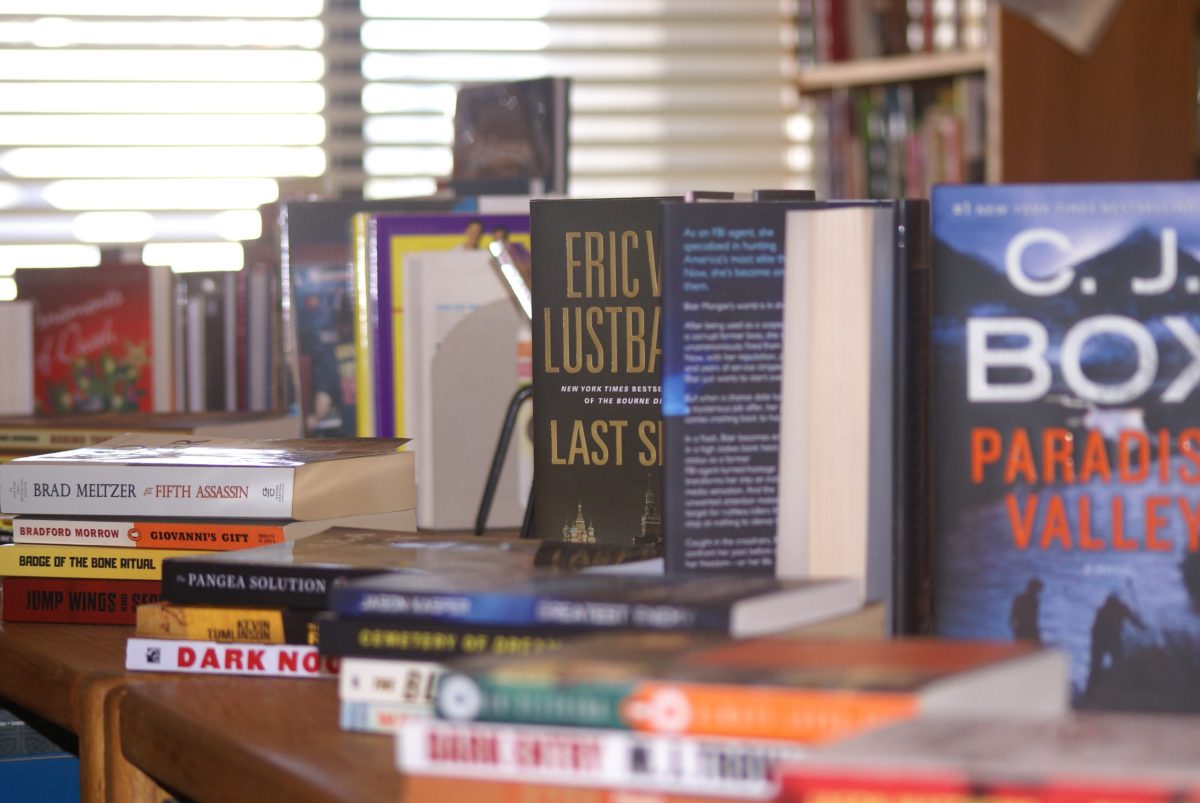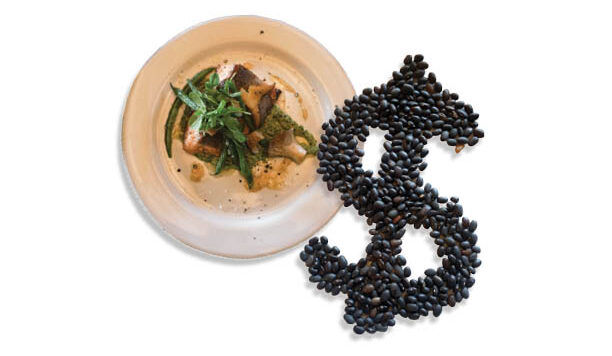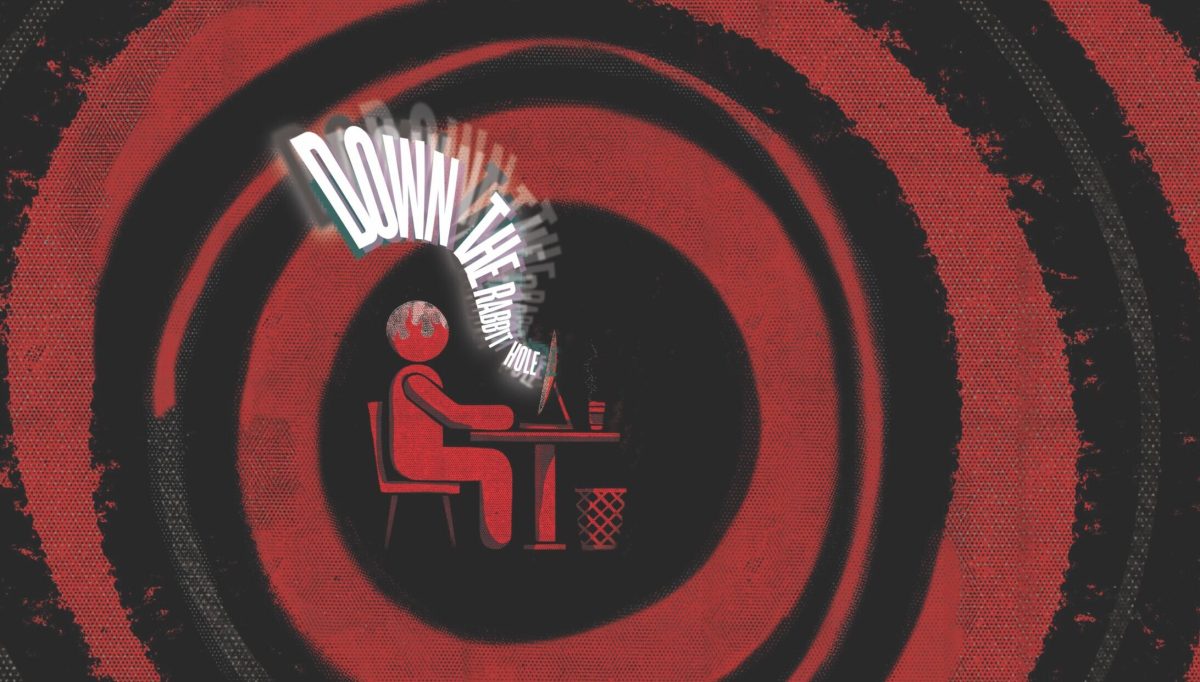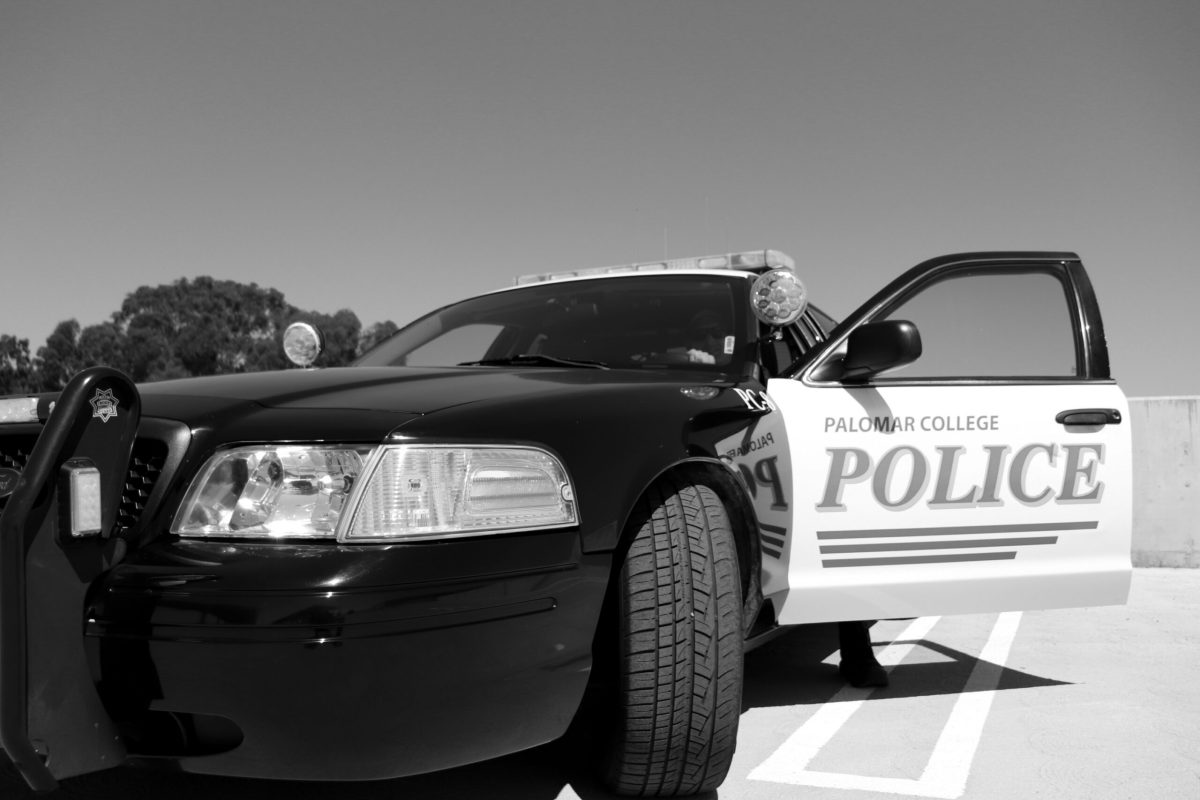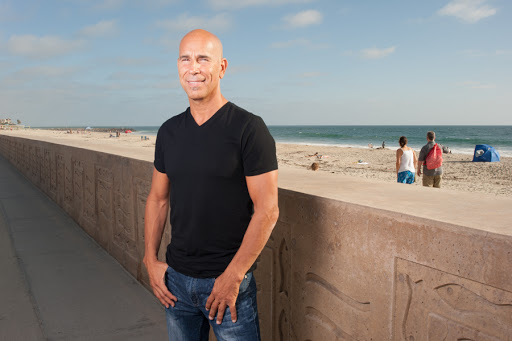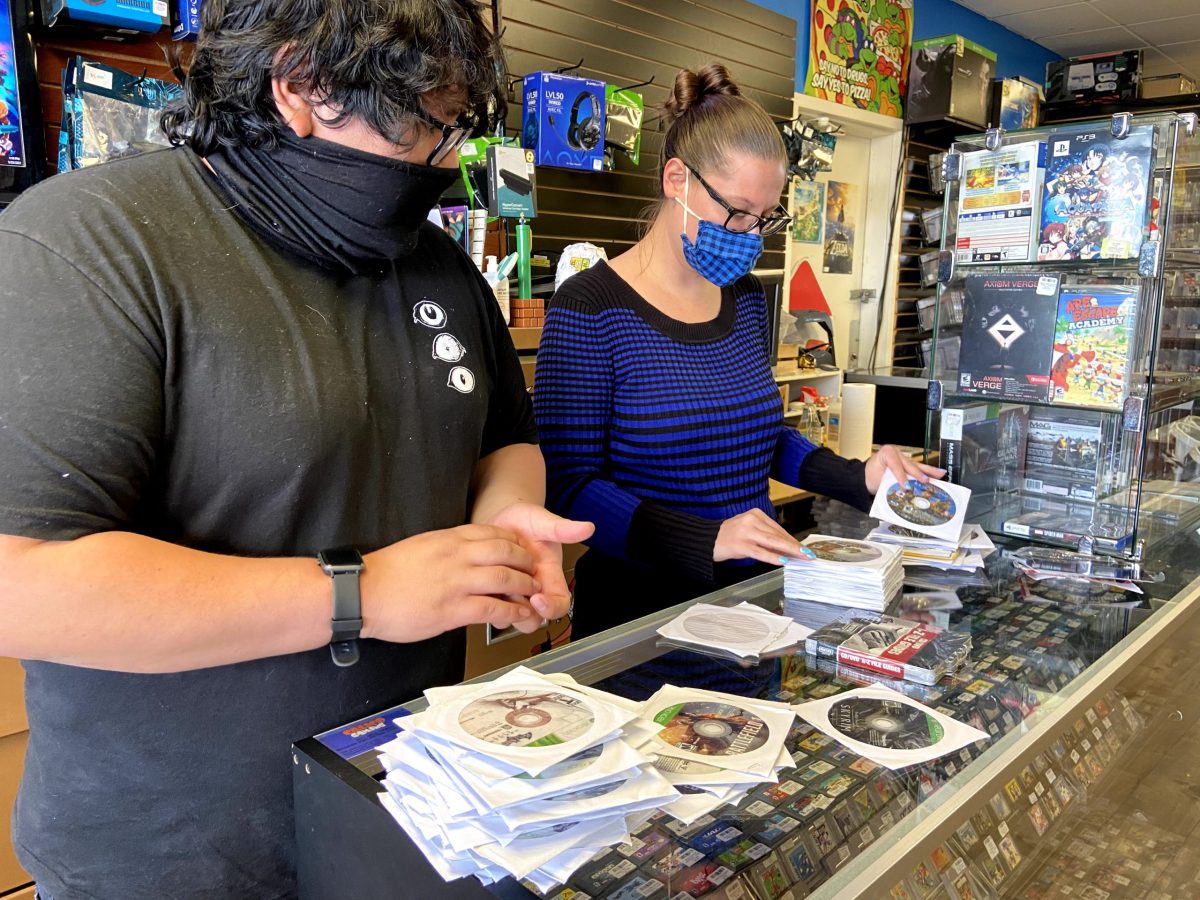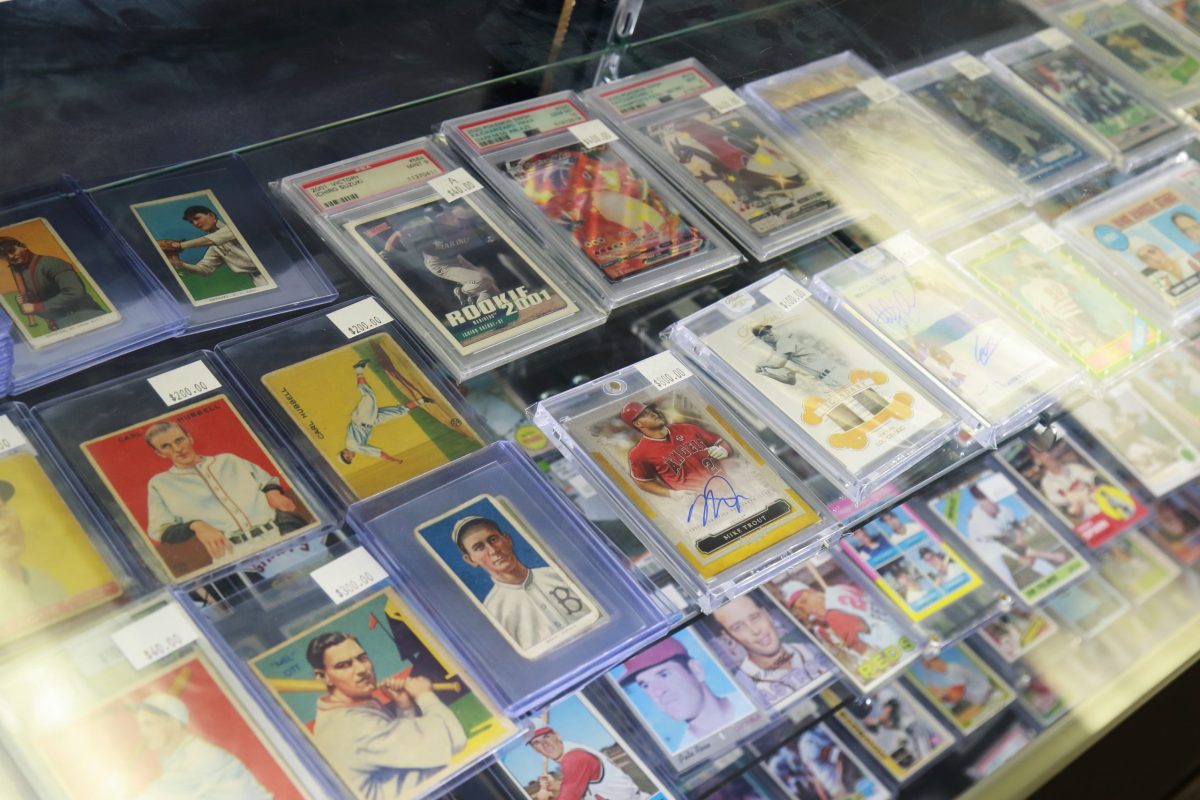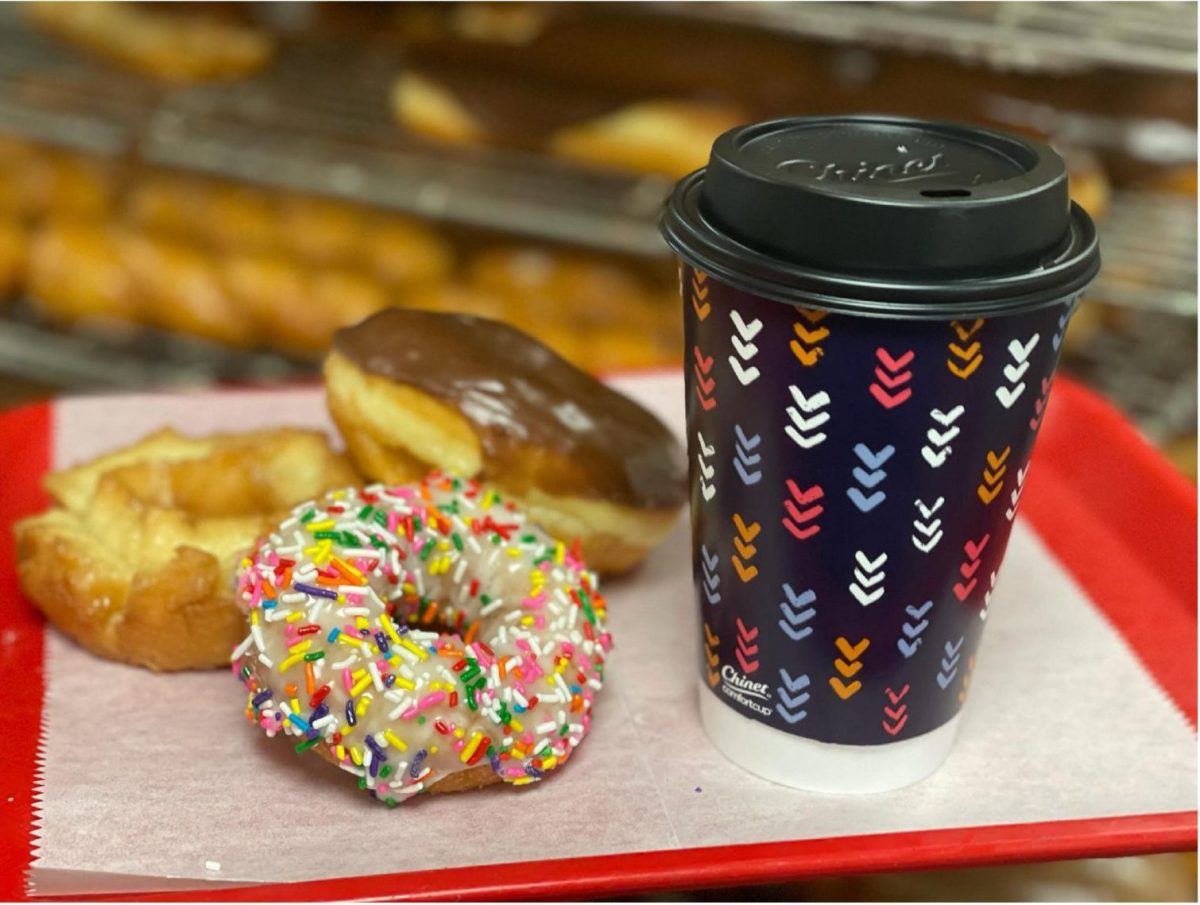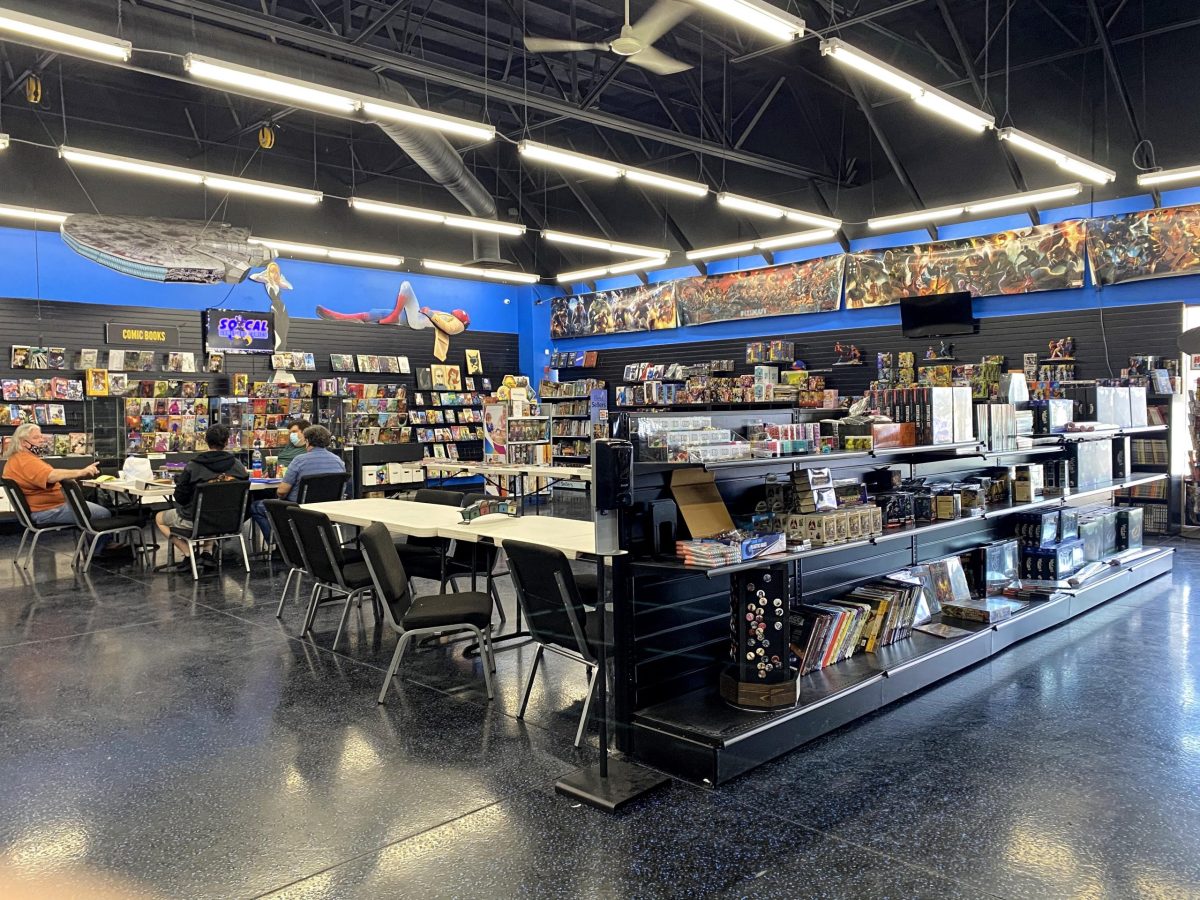Built from the ashes, “Farenheit 451 Books” is a small bookstore with narrow hallways and tall bookshelves that transports guests into a world of imagination.
The “candy store for the mind” was founded by Philip 16 years ago in Carlsbad, Calif., just steps from Carlsbad State Beach. Inside, guests can find anything from novels and comic books to movies and art, but don’t expect to find a tablet or e-reader. Through fires and a global pandemic, Philip has continued to keep independent bookselling alive, making his shop a favorite of San Diego locals and tourists alike.
Why the name “Farenheit 451 Books?”
Famous author Ray Bradbury created a dystopian world where censorship runs high in his book, “Fahrenheit 451.” The way Bradbury did it was by burning books that didn’t follow the government’s agenda. Although Philip, who requested his last name not be used, has a blatant hate for censorship, choosing the name of his store runs deeper than that.
In 2003, the Cedar Fire was known as California’s largest wildland fire in history. It began at 5:30 p.m. on Oct. 25 in the Cleveland National Forest, east of Palomar College. Throughout San Diego County, the fire scorched over 280,000 acres and destroyed almost 3,000 buildings. One of those affected by this tragedy was Philip.
“In fact, that’s how I named the store ‘Farenheit 451.’ I lost over 100,000 books in the fires,” Philip said when interviewed at the store.
At the time, Philip lived in Ramona and his home was lost in the destruction. Along with his house and books, he also lost his own personal collection of art.
When Philip decided to head west and open up a store in Carlsbad, he ditched the “useless ‘h’” and “Farenheit 451 Books” found its name. Fortunately, the name itself helps to draw in customers. Chris Bonner, a local resident and Palomar College alumnus said he chose to check out Farenheit 451 Books because of his love for Ray Bradbury.
Seeing where Philip is today, most people wouldn’t imagine he was once living on the East Coast studying to become a doctor. He attended both Michigan State University (MSU) and the University of Michigan for college. Ultimately, Philip lost interest in pursuing pre-med and decided to change his major. He ended up graduating with a degree in psychology.
While attending college, Philip worked at a local, independent pizza shop. That small shop eventually grew to be what we now know as the empire that is Domino’s Pizza.
“Had I known what was going to happen, I could’ve been the West Coast pizza king,” Philip said jokingly.
In 2020, Domino’s celebrated the opening of its 17,000 store, ironically, in Bradbury, New South Wales, Australia.
The Birth of a Bookstore
As an occupation, Philip was a woodworker with a second job, but his most important full-time job was being a single father. Eventually, Philip fell onto hard times and with a family to provide for, not having money wasn’t an option.
Prior to “Farenheit 451 Books,” Philip owned two local bookstores in Julian, but not out of passion. With a few books and a garage, he opened up his first bookstore, “The Julian Bookstore,” 32 years ago.

After that, he moved on to open his second bookstore, “The Old Julian Bookhouse.” Next came the dreadful Cedar Fire, then his decision to move bookselling to the sunny, San Diego coast, opening “Farenheit 451 Books.”
“You know, as Carlsbad has grown, it seems to be busy all the time. It used to be summer, spring break and holidays, but now it seems to be more regular,” Philip said.
He said that the addition of timeshares and housing have helped to keep revenue coming in year-round. According to Philip, about half of his sales are from regular customers.
His store catches the eyes of not just tourists walking down the heart of Carlsbad Village, but the local San Diego residents as well.
Donald Snider, a long-time customer said, “When I’m in the neighborhood, I always walk by and see what I can find in here.”
One thing customers will notice when walking through the store is the overflow of books. Philip not only has part of his shop set up on the patio but he also has stacks of books set up throughout the shop. Those stacks of books have paper signs that read “not for sale,” meaning they haven’t yet been priced or are waiting for space to be displayed. For Snider, the best part of the store is the constant new stock.
Along with his store, Philip also owns another suite and has around 2,000 square feet off-site that houses more of his book collection. In total, he estimates that he has built back a collection of around 100,000 books. All that storage definitely comes at a price. Just to house his books, Philip pays about $8,000 a month.
One thing to know about the store: the hours are never concrete. A small sign on the door includes Philip’s phone number and directs customers to call him for the store hours each day.
Although books are his largest seller at this time, Philip’s real love is art. He used to be an artist, but when his personal collection burned down, he stopped collecting as a whole. He has since begun collecting and selling it again, utilizing the spaces too high for books to display his art.
The Pandemic’s Affect on Profit
As the world shut down a little over a year ago, Philip realized it was time more than ever to reach out for help. On March 19, he started a “GoFundMe” page with a goal of $30,000. Philip only raised a sliver of that goal, but the pandemic didn’t bring him down.
Due to California enacting a total shutdown of “non-essential businesses,” his shop was closed until mid-May of last year. Philip was allowed to reopen his shop on May 11, and since then business has been busy as ever.
Although now the shop is back up and running, Philip wasn’t exactly happy with what businesses were considering “essential.”
“It’s okay to shop there, but it wasn’t okay to shop here,” he said, referencing major chains such as Walmart, Costco and Target.
During the pandemic, Philip even had to remove the “used books” sign on his window. Customers were nervous about buying books that were advertised as used because of the fear of spreading or contracting COVID-19.
Owning a Bookstore in the Digital Age
According to an article published by the Harvard Business School, written by Ryan Raffaelli, U.S. independent bookstores are actually on the rise.
“By 2009, the ABA [American Booksellers Association] reported an all-time low in its membership and the number of independent bookstores operating in the U.S. Yet starting in 2010, ABA membership unexpectedly began to rise,” the article reported.
Raffaelli also said that the ABA reported around 1,700 “indie” bookstores in 2009, but saw an increase of almost 2,500 stores in 2018. In that nine year gap, the growth of independent bookstores was up 49 percent.
Philip believes he has kept his store in business because he sticks to the “bare bones:” selling books. He stopped trading books about 10 years ago, doesn’t have a coffee stand, doesn’t have a children’s book club and doesn’t have a single employee besides himself. His prior bookstores included all of the above, but for this one, he decided to make it easy and it seems to be working just fine.

Prior to the pandemic, the bookstore was up for sale and even had a serious buyer lined up to purchase it. The sale fell through, but Philip is always looking for a potential buyer.
There’s no telling the exact future of the store, but he does hope to increase the amount of art sales. Currently, only about 10 percent of his sales are from art.
At least for Philip, he does have an idea for his future.
His next business adventure will be to open a smaller bookstore with art as the main focal point. He plans on naming the new store “Dangerous” because his customers often say coming into “Farenheit 451 Books” is dangerous for their wallets.

